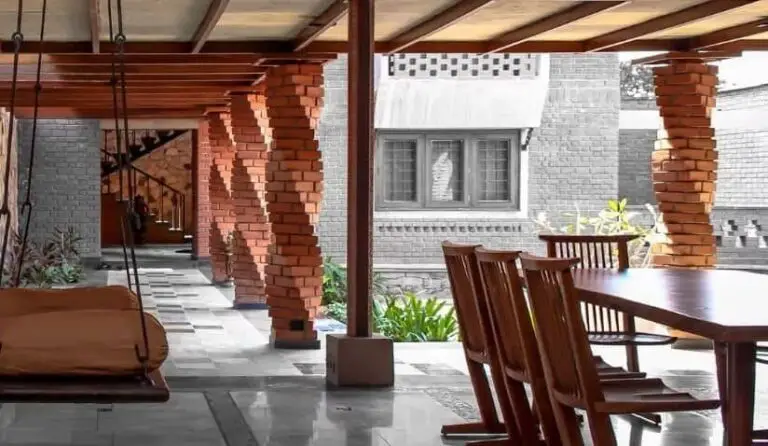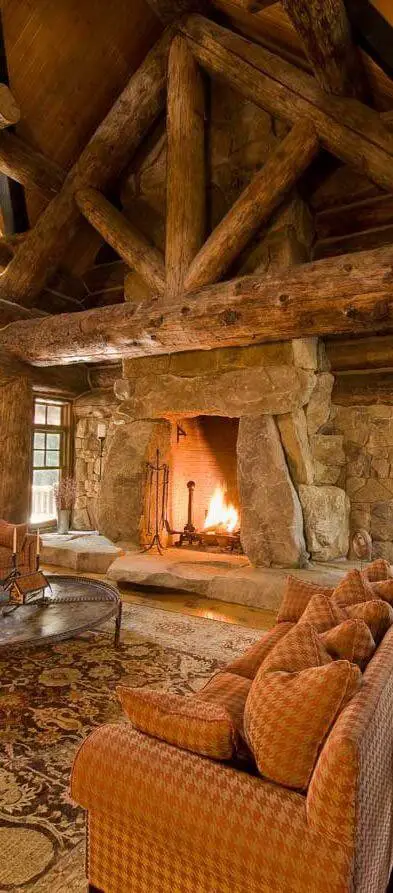34 Different Types Of Ceilings And Their Pros And Cons
While ceilings may often be overlooked in home improvement, they can significantly impact the ambiance and functionality of a room. The assumption that drywall is the only option available can lead to missed opportunities for unique looks or improved performance. However, there are numerous alternatives to explore, each offering distinct advantages and characteristics. To make an informed decision, it’s essential to research each type individually.
In this article, we’ll outline 34 different ceiling options, from acoustic tiles to tongue-and-groove ceilings, providing a comprehensive guide for homeowners seeking to elevate their spaces.
Acoustic Ceiling Tiles
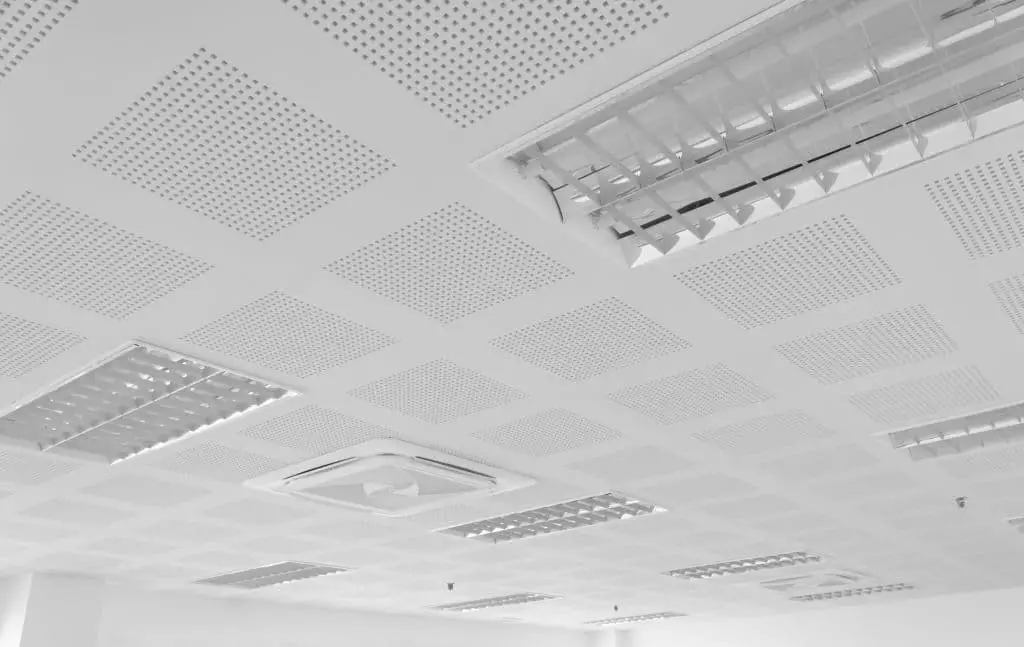
Acoustics Ceiling Tiles offer a compelling alternative to traditional ceiling tiles for those seeking enhanced sound absorption. This innovative solution consists of small, interlocking tiles that can be installed in various patterns on an existing ceiling. The benefits are numerous: it effectively absorbs sound and noise, conceals unsightly features or design flaws, and even saves money by allowing more natural light to enter the space.
Additionally, these tiles boast versatility and flexibility in their installation and application. However, it’s essential to weigh these advantages against some potential drawbacks: installation can be a challenge, the tiles are not waterproof, and they may deteriorate over time.
Barrel Vault Ceiling
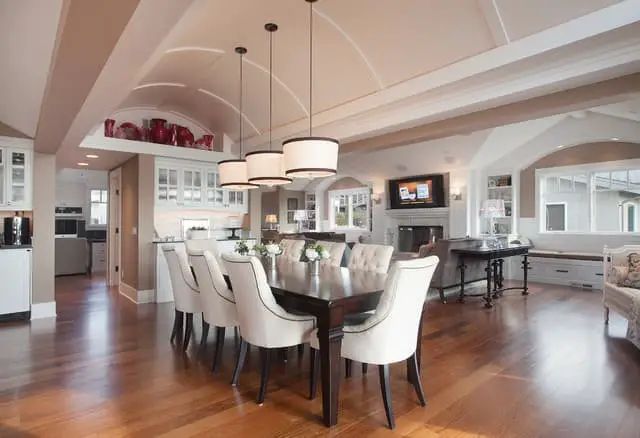
The barrel vault ceiling, comprising a series of interconnected arches that evoke a barrel shape, offers unparalleled versatility. This structural design can be employed in much the same way as a dome or umbrella roof, making it an attractive option for residential and commercial spaces alike.
One of its greatest strengths lies in its ability to create a sense of spaciousness, which is perhaps why it’s so popular among architects and designers.
Whether you’re designing a home, restaurant, store, or theater, the barrel vault ceiling can be tailored to fit any interior design style, from modern to traditional.
Some of the key benefits of this design include:
* It creates more visual space, making rooms feel larger than they are.
* Its flexibility means it can be adapted to suit any aesthetic or functional requirement.
* The ceiling’s shape allows for greater natural light penetration into the interior space.
* The overall effect is often dramatic and visually striking, making it a great focal point in any room.
However, as with any design choice, there are some potential drawbacks to consider:
* If not used thoughtfully, the same design can become monotonous if repeated throughout the space.
* The ceiling’s shape can actually make rooms feel smaller than they are, particularly if the interior walls lack sufficient support for their structure.
* Water accumulation and moisture issues can arise due to the ceiling’s design, which may require careful planning and maintenance to mitigate.
* The construction costs associated with this type of ceiling can be higher than those for other designs.
Beam Ceiling
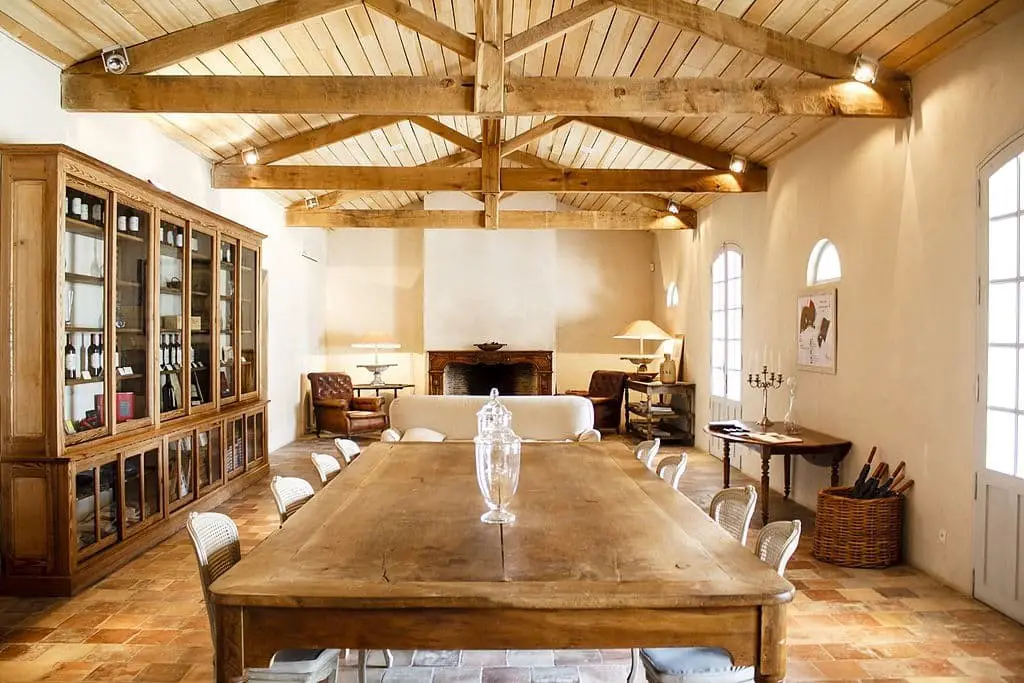
In a beamed ceiling, the structural elements are intentionally left uncovered, showcasing raw materials like wood, steel or concrete. This design choice offers a range of benefits, from augmented natural light to enhanced creativity and even improved cooling capabilities. Additionally, the rustic charm of exposed rafters can significantly boost your home’s character, while also providing extra space for storage or display purposes.
On the flip side, beamed ceilings often come with higher upfront installation costs and require more maintenance to keep them looking their best. Furthermore, the openness of these designs may compromise energy efficiency if proper insulation measures are not taken. Nevertheless, the unique aesthetic and functional advantages that beamed ceilings provide can make them a worthwhile consideration for those seeking to add a touch of rustic elegance to their living spaces.
Cathedral Ceiling
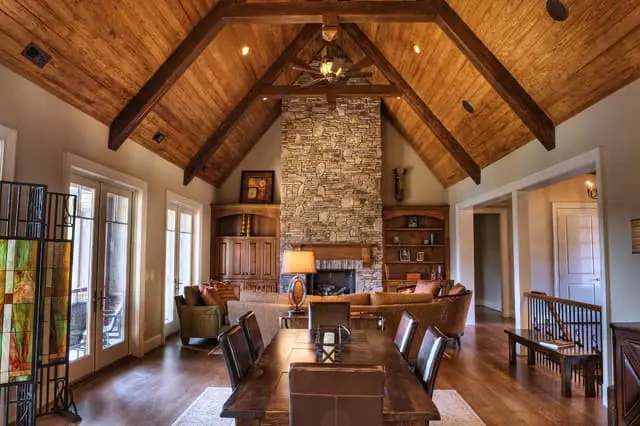
A cathedral ceiling, characterized by its flat or curved design, derives its impressive height from the structure above it, rather than a raised roofline. This architectural feature is often associated with luxury, as it creates a sense of openness and grandeur within a room. The influx of natural light pouring in through skylights or windows further enhances the ambiance, making it an ideal setting for relaxation.
On the plus side, cathedral ceilings can greatly expand the perceived space within your home, allow ample lighting, and are strategically positioned to create a sense of height. However, these benefits come with some drawbacks, including higher upfront costs and potential high maintenance expenses.
Cloister Ceiling
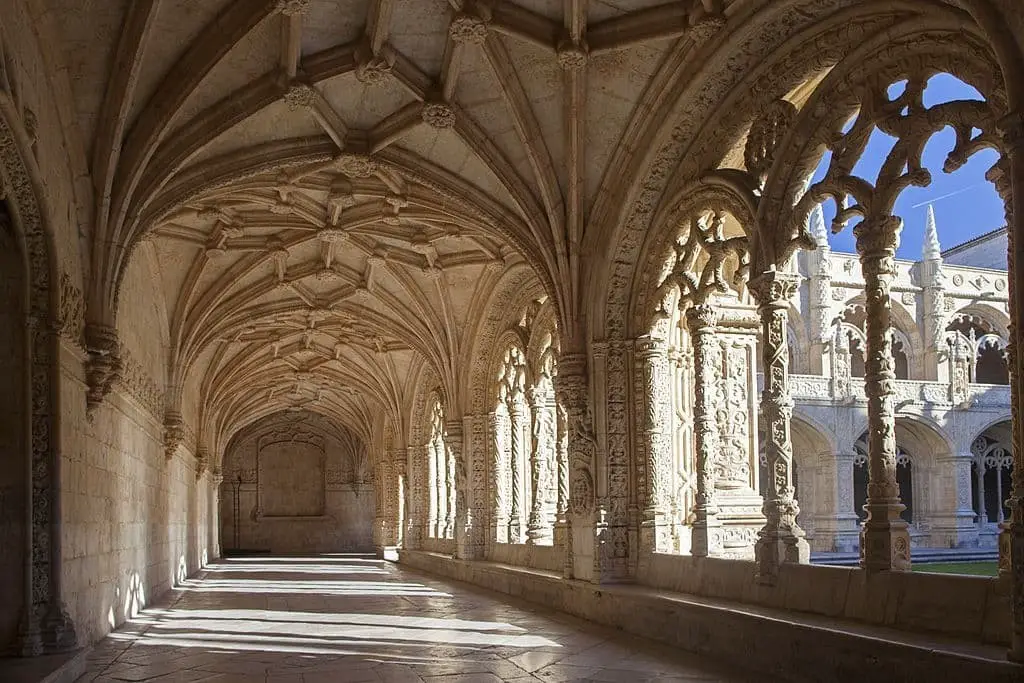
The central dome or half-sphere, characteristic of this architectural feature, dominates the nave – the central gathering space within a church. Its curved ceiling adds an air of grandeur and drama to the atmosphere, allowing congregants to connect with one another and their faith. Originally built at the heart of monastery buildings, it served as a beacon of light, fostering unity among the various structures.
One of its key benefits is its adaptability – it can span an entire room, creating a sense of openness and freedom. Additionally, it lends itself well to various interior design styles, effortlessly complementing diverse aesthetics.
While there are some drawbacks to consider, they do not outweigh the advantages. For instance, the increased expense for utility bills and additional maintenance costs are minor trade-offs compared to the overall aesthetic appeal of this architectural feature.
Coffered Ceiling
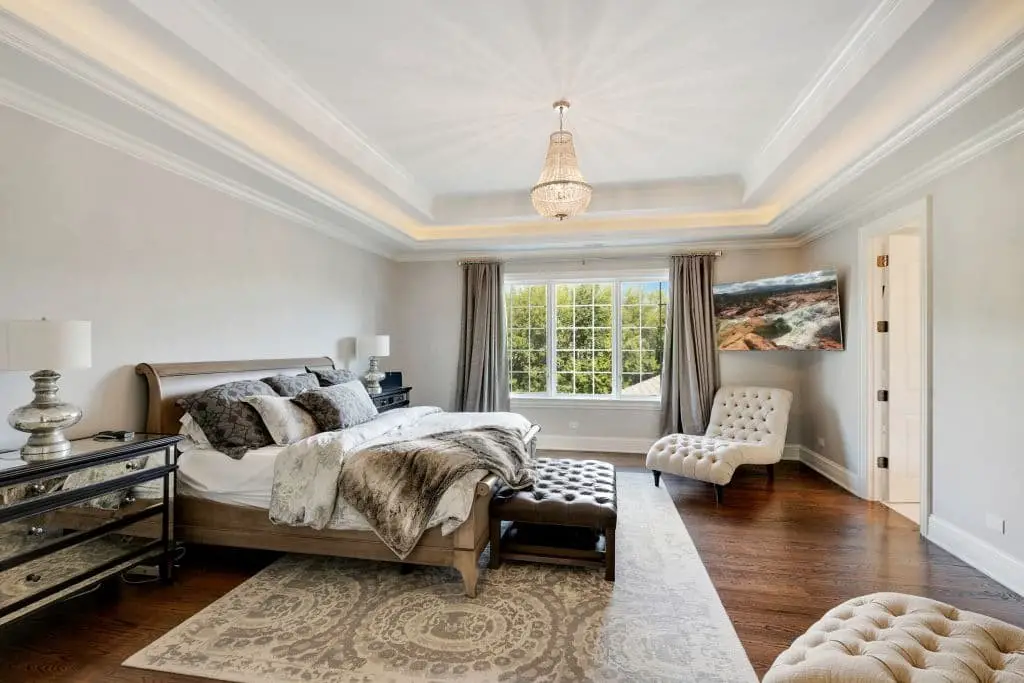
The ornate, aesthetic nature of coffered ceilings makes them a popular choice for high-end homes, hotels, libraries, and even churches. When installed, they bring a touch of luxury and classic charm to a space. If chosen thoughtfully, the focal point created can draw attention to the center of the room, providing an ideal spot for showcasing artwork and enhancing the overall décor. The benefits of coffered ceilings are numerous.
For one, they offer a timeless look that effortlessly blends with various design styles. Additionally, their elegant appeal adds drama to any space, making them an excellent choice for those seeking to elevate their home’s aesthetic. Furthermore, coffered ceilings provide a unique opportunity to display art and other decorative pieces. However, it is essential to consider the potential drawbacks of installing coffered ceilings.
One major drawback is the higher cost associated with this design element. Another consideration is the requirement for professional installation to ensure a high-quality finish.
Conventional Ceiling
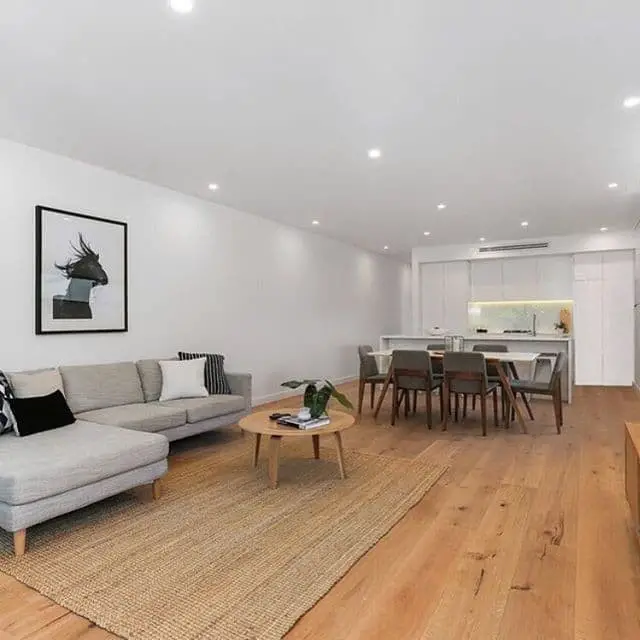
In contemporary settings, such as office buildings or hotels, a sleek and modern floor design is often the norm. When a bright and airy ambiance is desired, this style shines. The flat, unobstructed surface provides an ideal canvas for showcasing personal taste without any visual distractions. The benefits of this design include its versatility in complementing various styles, its attractive aesthetic appeal, as well as its ease of installation and removal should repairs be necessary.
Furthermore, it makes light installation a breeze. However, there are also some drawbacks to consider. The smooth surface can make the floor more susceptible to discoloration over time. Additionally, regular maintenance and repair work become essential to keep the design looking its best.
Cove Ceiling
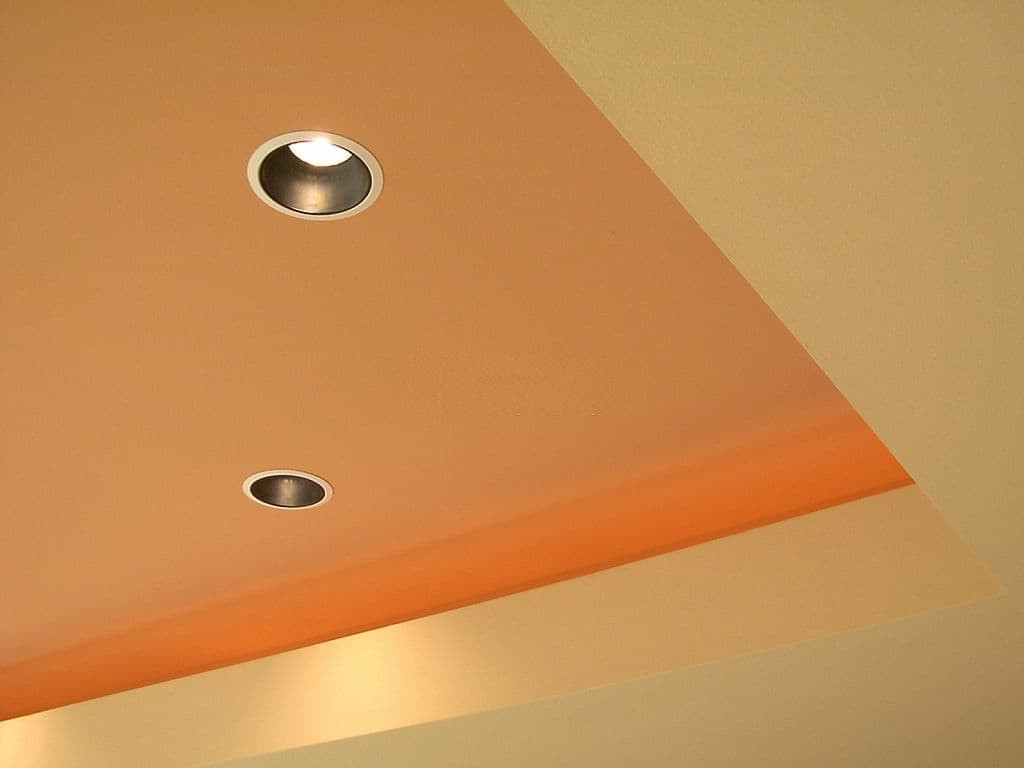
When it comes to cove ceilings, there’s no shortage of creative possibilities. This design concept involves elevating your lighting fixtures to a visually striking area, creating an impressive focal point in any room. You can opt for single coves or more elaborate designs featuring multiple light fixtures, each one adding its own unique charm. One of the greatest advantages of cove ceilings is their ability to elevate a space’s aesthetic appeal, making it feel more sophisticated and refined.
By drawing the eye upwards, cove ceilings can also create the illusion of higher ceilings, which is particularly beneficial in smaller rooms. Furthermore, this design element can add significant value to your home, making it an attractive feature for potential buyers. However, there are a few potential drawbacks to consider. For one, creating a cove ceiling can be a more complex and time-consuming process than other designs, requiring a greater investment of resources and effort.
Additionally, the transition between walls and ceiling can be a bit tricky to get right, which may make painting a room slightly more challenging. Despite these challenges, many homeowners find that the benefits far outweigh the drawbacks, making cove ceilings a worthwhile consideration for any interior design project.
Dome Ceiling

The installation of a dome ceiling can be an astute decision when looking to create the illusion of greater spatial awareness in your home entryways and hallways. This design feature has gained widespread popularity among architects due to its remarkable ability to dramatically expand the perceived room size. When installed, it can add considerable space to your home, effortlessly elevating the ceiling height and creating a sense of grandeur.
The advantages of a dome ceiling are multifaceted.
Not only does it provide ample spatial awareness, but also boasts low maintenance and energy-efficient properties.
However, the installation process can be complex, resulting in increased costs. This added complexity is the primary drawback to this architectural feature.
Drop Ceiling
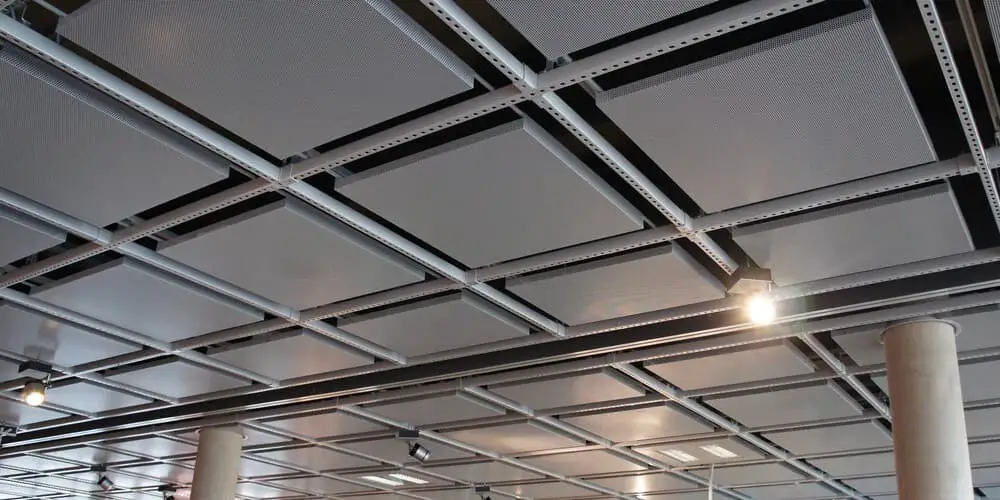
The suspended ceiling has become a staple in commercial spaces like offices and stores due to its ease of installation. However, it’s not exclusive to these environments – you can also request a large space for this type of ceiling in your home entryway or hallway if desired. Its primary function is to conceal any unwanted visual elements when viewed from below, such as pipes, ductwork, and wiring.
Additionally, suspended ceilings can offer soundproofing benefits and are available in a range of colors and styles.
On the flip side, this type of ceiling has its drawbacks. It tends to deteriorate at a faster rate compared to other options, which may lead to more frequent maintenance or even replacement. Furthermore, suspended ceilings can also reduce the perceived height of a room, potentially affecting its overall aesthetic.
Exposed Ceiling
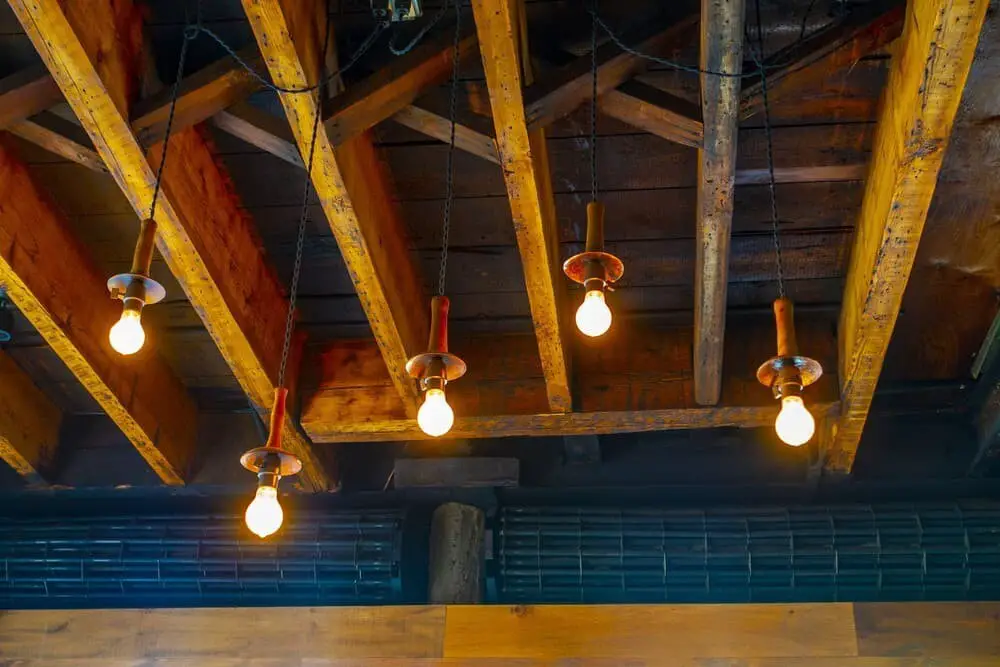
The exposed ceiling type is a harmonious blend of lath and plaster designs. This style excels in rooms where natural ventilation and aesthetic appeal are paramount, such as living spaces, dining areas, family rooms, or bedrooms. By incorporating an exposed ceiling, homeowners can effortlessly inject character into their home without undergoing extensive renovations. On the plus side, this type of ceiling allows hot air to circulate freely within your home, creating a cozy ambiance.
Visually, it adds a touch of elegance and sophistication to the room. Furthermore, it provides a canvas for creativity, allowing you to express yourself through decorative elements and lighting fixtures. However, there are some drawbacks to consider. For instance, exposed ceilings require additional maintenance to ensure they remain in good condition. Additionally, in certain situations, airflow may be restricted, which could impact the overall air quality and comfort of your home.
Groin Vault Ceiling
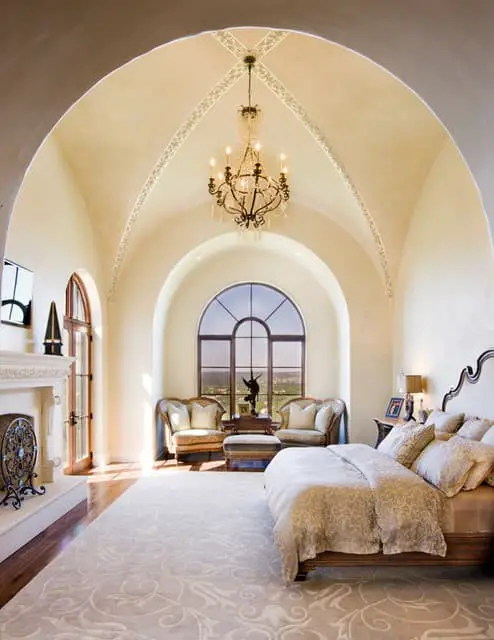
The groin vault ceiling is a true masterpiece of architectural creativity, perfect for those who love dramatic angles and curves. This unique design thrives in spaces with room between the floor and roof, making it an ideal choice for under-the-floor areas like basements and garages. While it may not be suitable for every room, its benefits are undeniable.
On the plus side, groin vault ceilings can bring more space into a room, allowing natural light to flood in and adding a charming character that’s hard to replicate with other designs. Additionally, they provide a venting area for hot air to escape, which is essential for maintaining a comfortable temperature. From an aesthetic standpoint, these ceilings add a touch of elegance and sophistication to any space.
However, it’s essential to consider the potential drawbacks.
High-maintenance costs are a reality when it comes to groin vault ceilings, as they require more energy to maintain a consistent temperature. Furthermore, some may find the design less cozy than others, which is worth keeping in mind if you’re looking for a warm and inviting atmosphere.
If you’re considering this unique ceiling design for your home, be sure to explore our related article, ‘These Basement Ceiling Ideas Are Perfect for Your Home’, for more inspiration and ideas.
Knockdown Ceilings
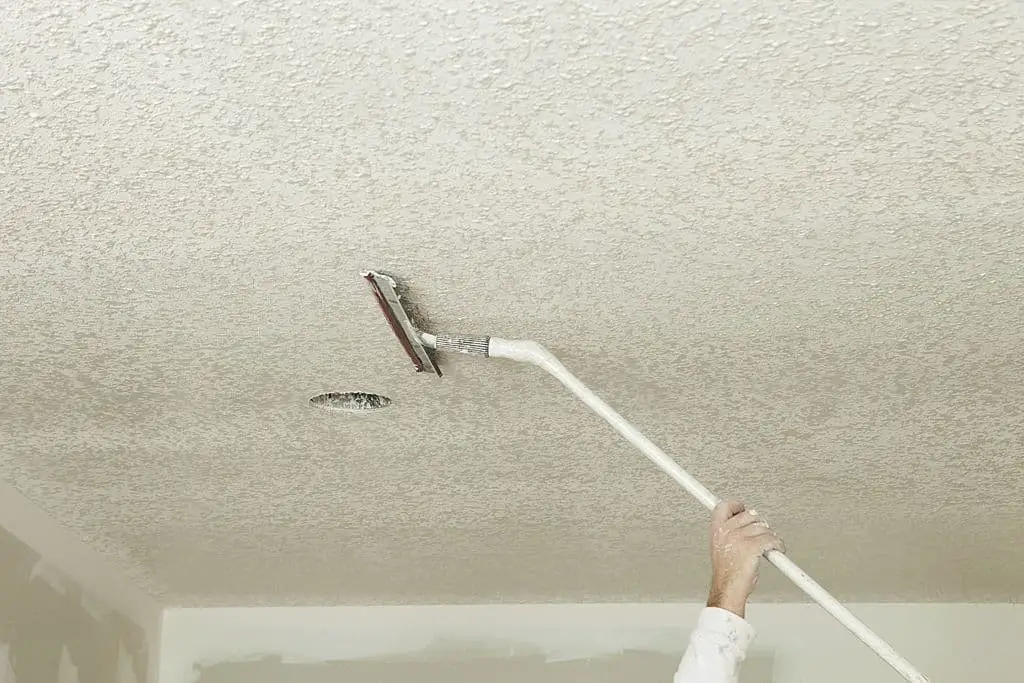
One of the most ubiquitous types of ceilings found in homes is the knockdown ceiling. As its name suggests, it’s characterized by a textured finish that can be easily installed and maintained. While not without its drawbacks, this type of ceiling has several advantages that make it a popular choice among homeowners. For instance, knockdown ceilings are effective at reducing sound and noise within a room, making them ideal for homes with multiple levels or shared living spaces.
Additionally, they’re relatively inexpensive to install and require minimal upkeep. However, there are some potential downsides to consider. If water is allowed to accumulate on the ceiling, it can seep through to the interior of your home. Furthermore, knockdown ceilings may not be as effective at blocking out sound and noise as other types of ceilings, potentially leading to a less peaceful living environment.
Finally, while the materials used for knockdown ceilings are generally durable enough, they may not be as long-lasting as those used in other ceiling designs.
Popcorn Ceiling
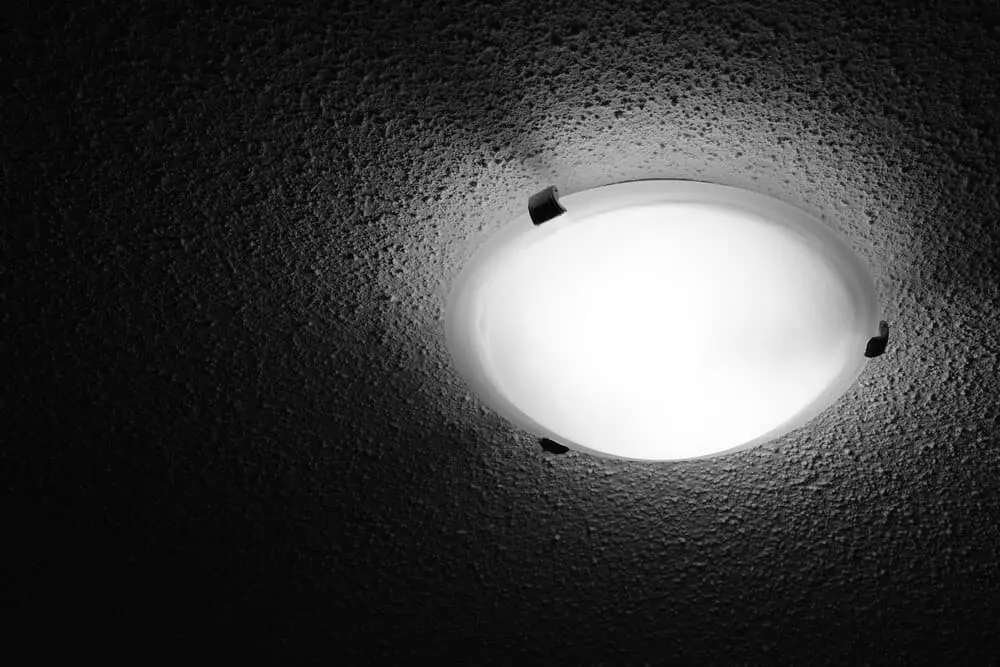
In the past, textured ceilings were a staple feature in many homes. Despite their prevalence, they’ve gradually fallen out of favor as homeowners seek more modern and functional alternatives. One of their primary advantages is their ability to conceal imperfections and flaws on the ceiling itself. However, this type of ceiling also has some notable drawbacks.
On the plus side, textured ceilings are often cost-effective, require minimal maintenance, and can effectively mask any unsightly blemishes. Additionally, they’ve been known to help reduce ambient noise by absorbing sound waves. These benefits have made them a popular choice for many homeowners in the past.
Unfortunately, textured ceilings also have some significant drawbacks. One of their most pressing concerns is the difficulty in cleaning them properly.
The textured surface can trap dust and dirt, making it challenging to keep the ceiling looking its best. Furthermore, when repairs or replacements are needed, textured ceilings tend to be outdated and harder to work with compared to more modern alternatives.
Shadow-Line Ceilings
Shadow-line ceilings offer an innovative way to create the illusion of increased height and width in your home. By employing black lines that cast shadows, this design element provides a sleek and contemporary aesthetic. Additionally, it adds functionality to the room by creating the sense of more space. The benefits of shadow-line ceilings include their ability to give your living space a clean look, affordability, and the infusion of style and personality.
While these ceilings present many advantages, there are also some drawbacks to consider. One major concern is maintenance, as the design can be easily scratched or damaged. Furthermore, the shadow-lines have a tendency to lose their shape over time, which may detract from the overall appearance.
Shed Ceiling
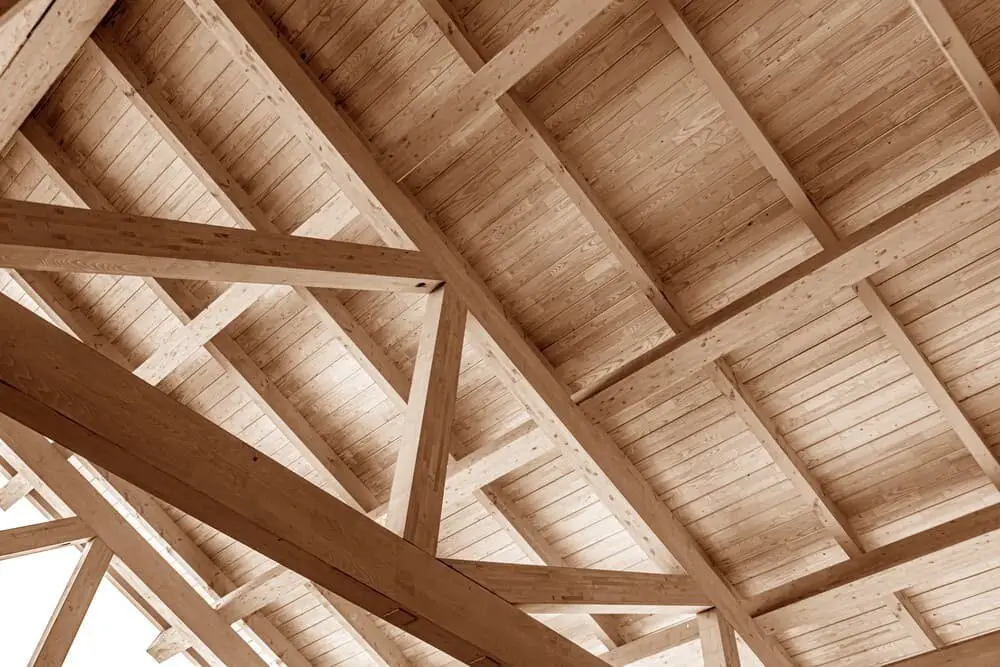
A shed roof has been a staple in construction for centuries due to its simplicity, flexibility, and cost-effectiveness. This type of roofing is particularly appealing because it allows for easy installation of solar panels, giving you that rustic look without sacrificing much interior space. While it may not be the most basic design, its pros far outweigh its cons. On the plus side, shed roofs are easily affordable and highly adaptable to site conditions and climate changes.
They also help minimize heat gain in your room, allowing sunlight and natural light to pour in. Additionally, they offer a new realm of internal space and can even add value to your property. However, it’s not all sunshine and rainbows. Shed roofs do have some drawbacks. For one, the low pitch can make certain areas look smaller than they actually are. Furthermore, it can also create dark spaces in other parts of your home, particularly in bedrooms.
Shiplap Ceiling
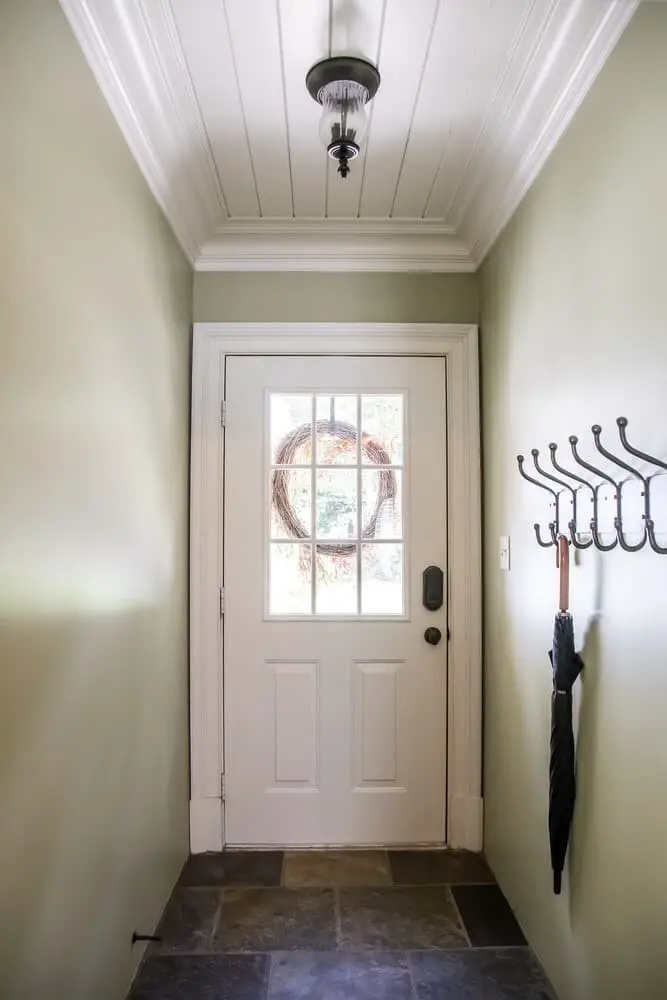
Shiplap ceiling has been a timeless choice for homeowners seeking a unique and rustic touch. This traditional roofing material is composed of horizontal wooden boards, carefully laid atop rafters to distribute the roof’s weight evenly. One of the most appealing aspects of shiplap ceiling is its handmade quality, allowing for creative expression and personalization.
On the plus side, shiplap ceilings bring visual interest to a room, making it an affordable option that can be installed in various areas of your home. However, there are some drawbacks to consider. For instance, this type of ceiling can accumulate dirt and dust, giving the appearance of being dirty. Moreover, if not installed correctly, the wooden boards may warp or rot, compromising the overall structure.
Sloped Ceiling
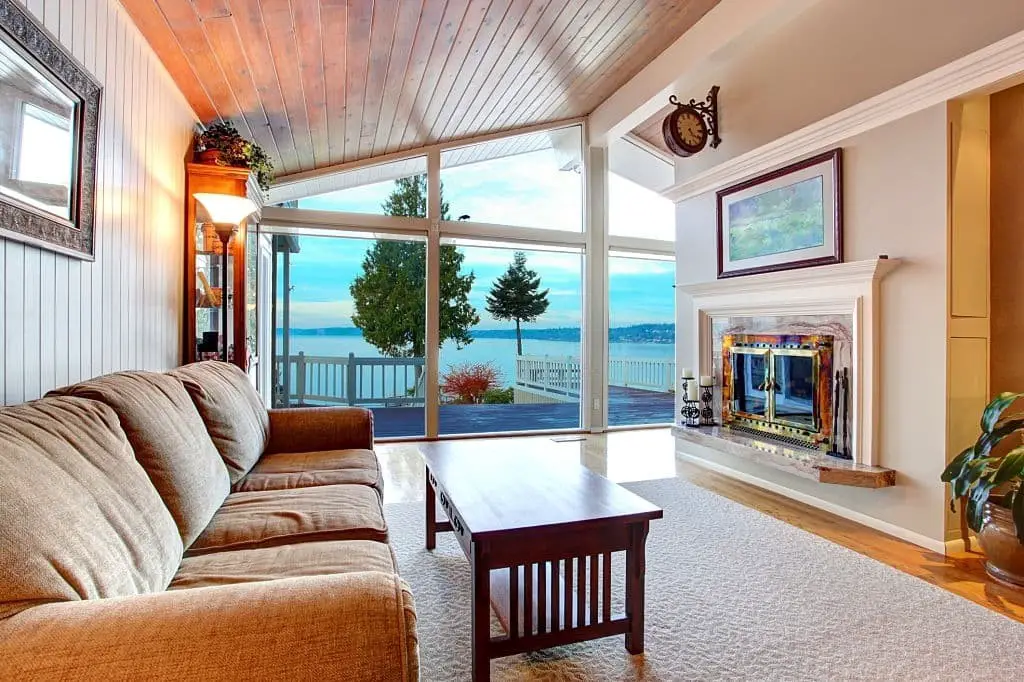
A sloped ceiling is characterized by its unique angularity, which can take on various shapes such as slanted, angled or curved. This architectural feature has a profound impact on the ambiance of a room, imbuing it with a sense of dynamism and freshness.
The benefits of a sloped ceiling are multifaceted. For one, it can dramatically alter the perceived size of a space, making it appear larger than its actual dimensions.
Furthermore, this type of roofing is relatively straightforward to install and maintain, requiring minimal upkeep over time. Additionally, the design possibilities are virtually limitless, allowing homeowners to inject their personal style into the ceiling.
While sloped ceilings offer many advantages, there are also some drawbacks to consider. One significant limitation is its energy efficiency, as the angled shape can lead to heat loss and gain.
Moreover, the installation process can be costly, potentially putting a strain on one’s budget.
Suspended Ceiling
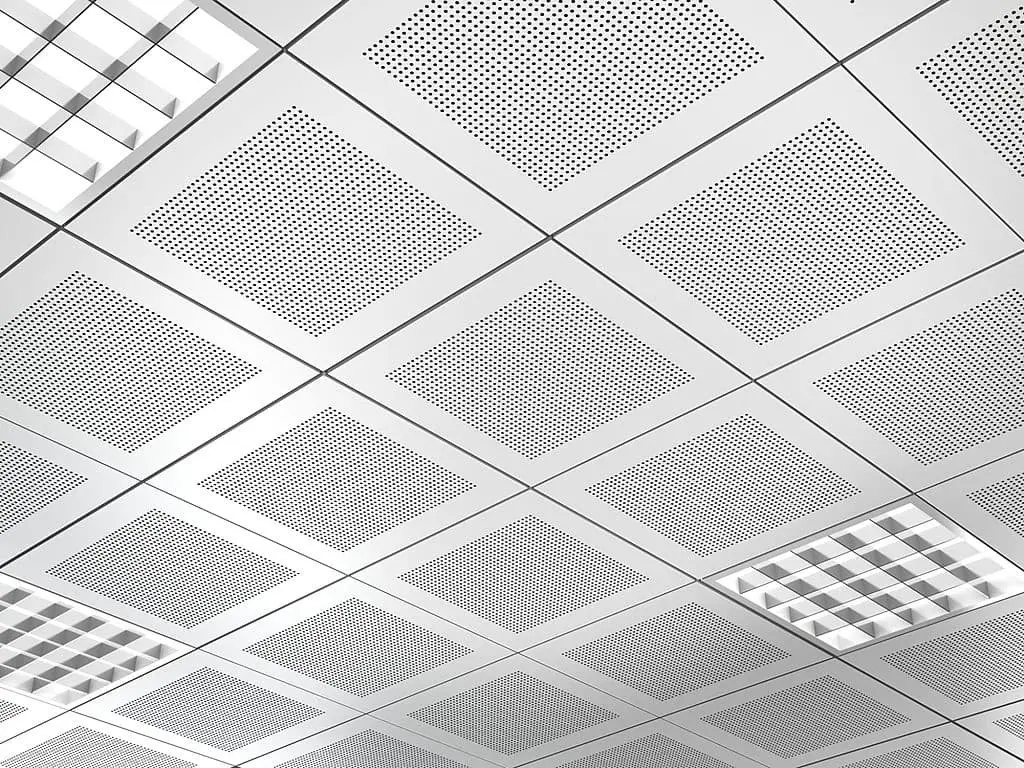
A suspended ceiling, often confused with its counterpart, a drop ceiling, differs in that it consists of tiles or panels rather than metal sheets. Typically found in offices and industrial settings where moisture, dust, and other elements won’t pose a threat to the installation, suspended ceilings provide an unobstructed view from below while also offering aesthetic appeal for residential use.
Their benefits include ease of installation, the ability to conceal imperfections like wiring and pipes, cost-effectiveness compared to renovation, and soundproofing capabilities that can transform a space into a cozy retreat. However, suspended ceilings do have drawbacks, such as reducing room height by several inches, potentially shorter lifespan, lack of sturdiness compared to traditional options, and the possibility of deterioration.
Tall Ceiling
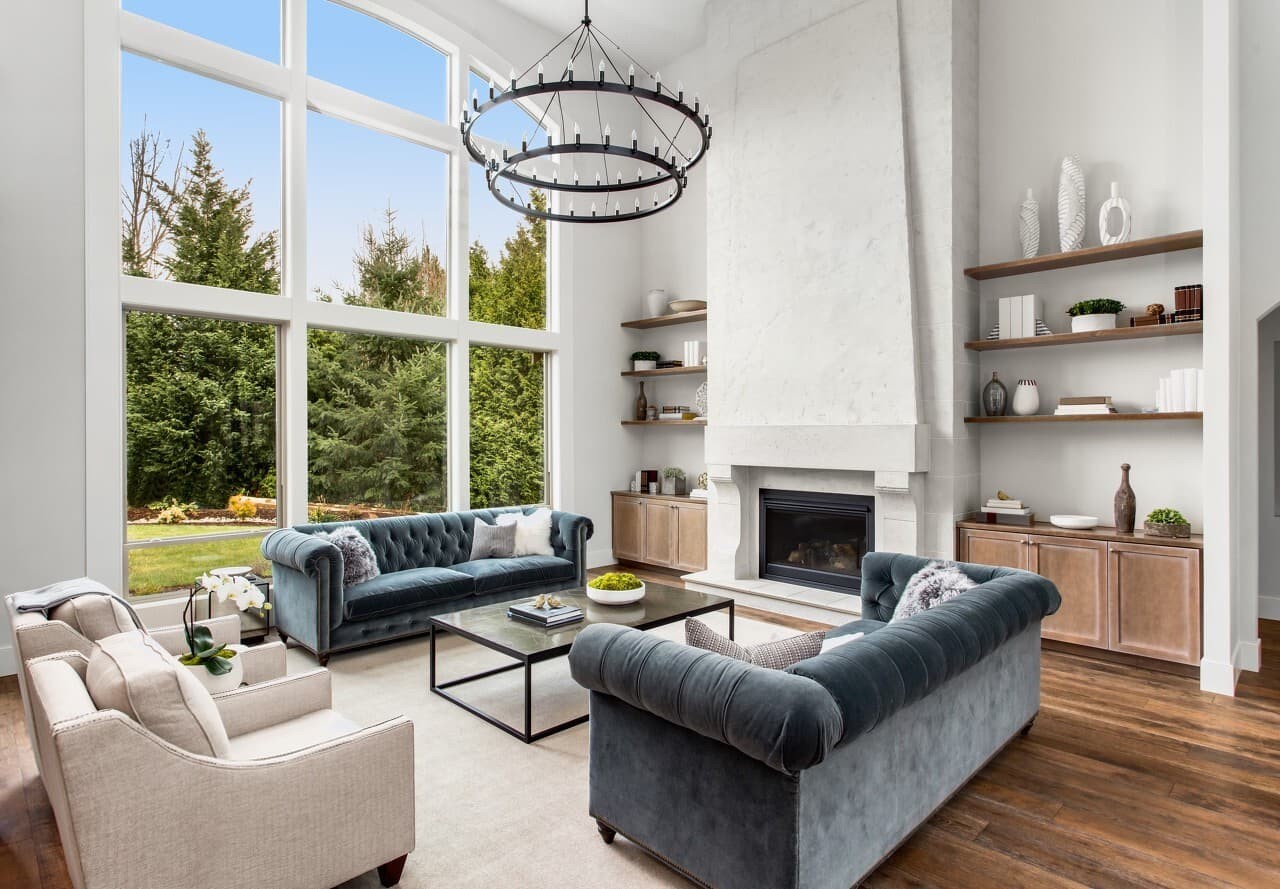
Tall ceilings, exceeding the typical 8-foot average height, can significantly impact a space’s ambiance. Often linked to high-end designs or luxurious budgets, these ceiling heights offer unique advantages.
On the plus side, tall ceilings can:* Enhance the room’s sense of spaciousness* Allow for greater natural light penetration* Create an aesthetically pleasing visual atmosphere* Even boost property valuesHowever, it’s essential to consider the potential drawbacks:* Increased maintenance and cleaning costs due to elevated surfaces* The risk of unwanted echoes and noise resonance
Tin Ceiling
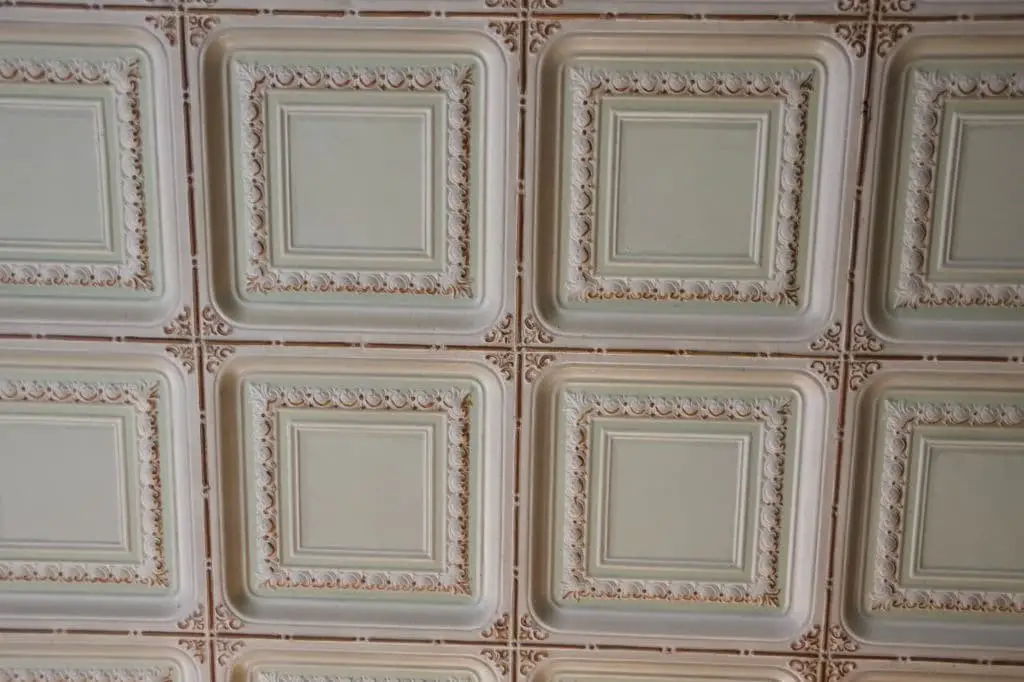
Tin ceiling tiles have gained widespread acceptance across various types of ceilings, largely due to their sleek aesthetic appeal that became a hallmark of the 1920s. Notably, tin’s lightweight nature simplifies installation, but it also renders these tiles more prone to corrosion, emphasizing the importance of meticulous handling. The benefits of tin ceiling tiles are multifaceted.
For instance, they possess an undeniable visual allure, allowing for effortless customization to align with personal design preferences. Furthermore, their non-porous material ensures that stains don’t seep in, making them a practical choice. Additionally, these tiles can be painted in any color and still maintain their shine for several years, further solidifying their appeal.
On the flip side, tin ceiling tiles are one of the more expensive options available, which may deter some homeowners from opting for this material. Moreover, they require higher maintenance to prevent corrosion and ensure optimal longevity.
Tongue and Groove Ceiling
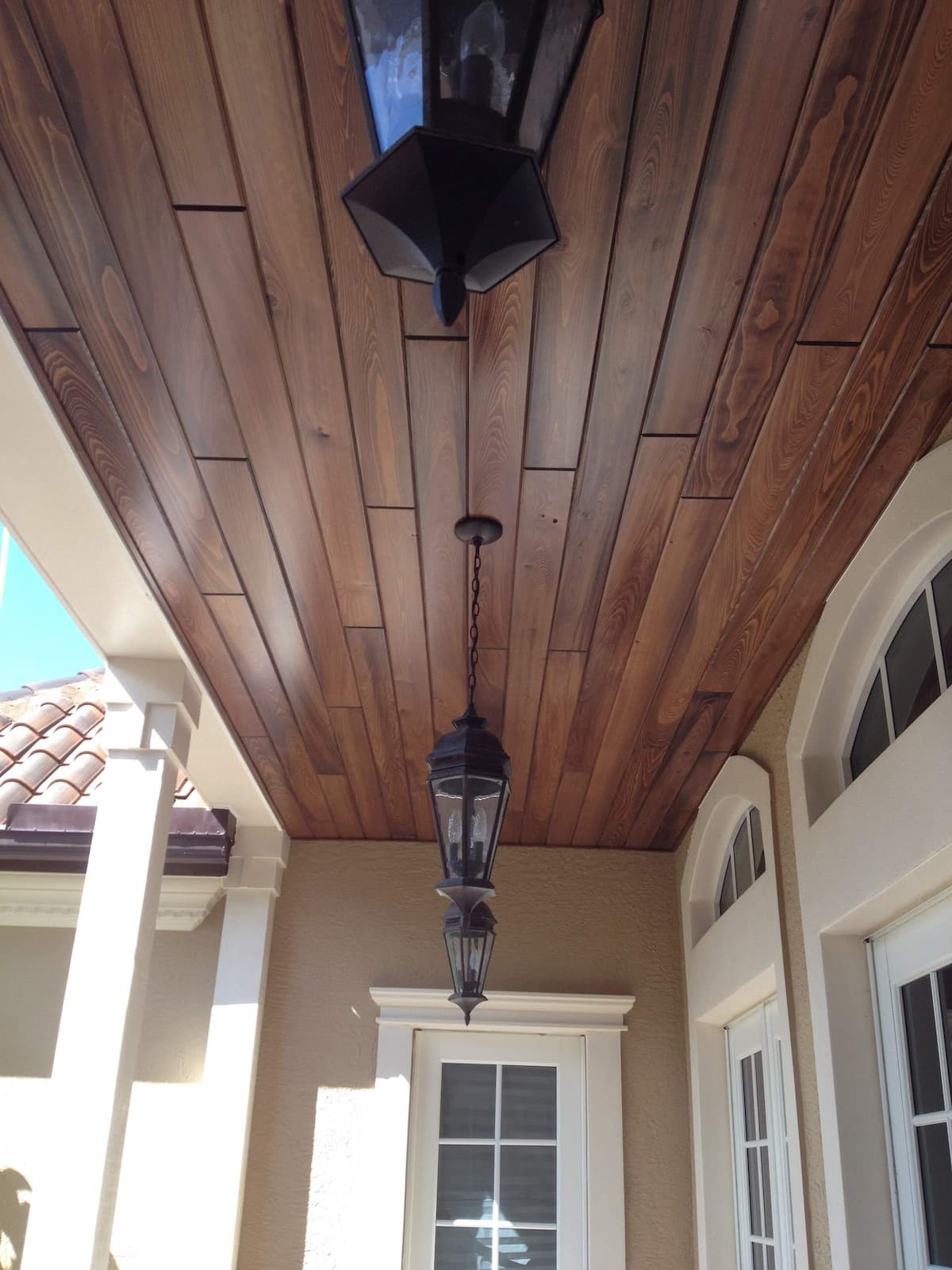
The traditional tongue-and-groove ceiling, often found in older homes, is composed of interlocking planks. Typically made from plywood or hardwood, these planks are stacked upon one another and secured with nails. While the installation process is relatively straightforward, it can be a more time-consuming endeavor compared to other types like tin ceilings. On the plus side, this ceiling type offers several benefits.
For instance, it’s easy to install, can create visual interest in a room, and allows for staining in any desired color. However, there are also some drawbacks to consider. Specifically, tongue-and-groove ceilings tend not to be sound-resistant, making them less than ideal for areas where noise is a concern. Additionally, the natural texture of this ceiling type can make it challenging to achieve an even paint job.
Tray Ceiling
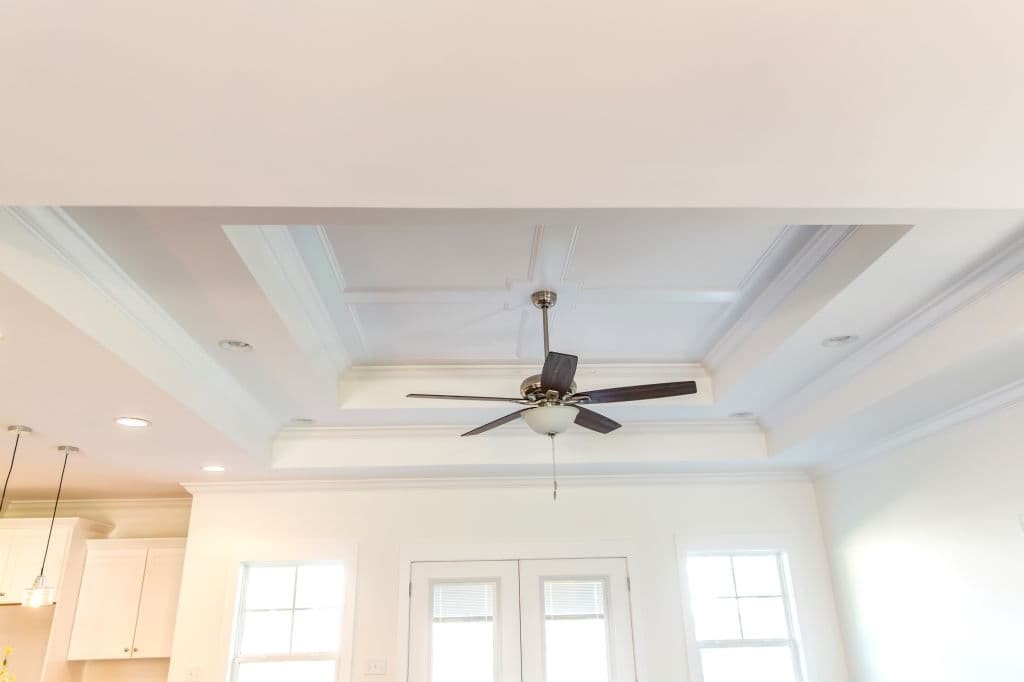
A tray ceiling shares some similarities with a cove ceiling, as it also opens up a room and is relatively easy to install. Its unique construction involves overlapping veneer sheets or plywood panels nailed on top of each other, allowing for creative lighting options in any room.
The benefits of this type of ceiling include its attractive appearance, compatibility with various architectural styles, dynamic design potential, and increased sense of height that can enhance the overall feel of a space. Furthermore, it can even add value to a property. However, the two-tiered height may make painting and cleaning more challenging than usual, and the drop-down border in some tray ceilings can slightly reduce the available headroom.
Despite these considerations, a well-designed tray ceiling can be a stunning feature in any room.
Vaulted Ceiling
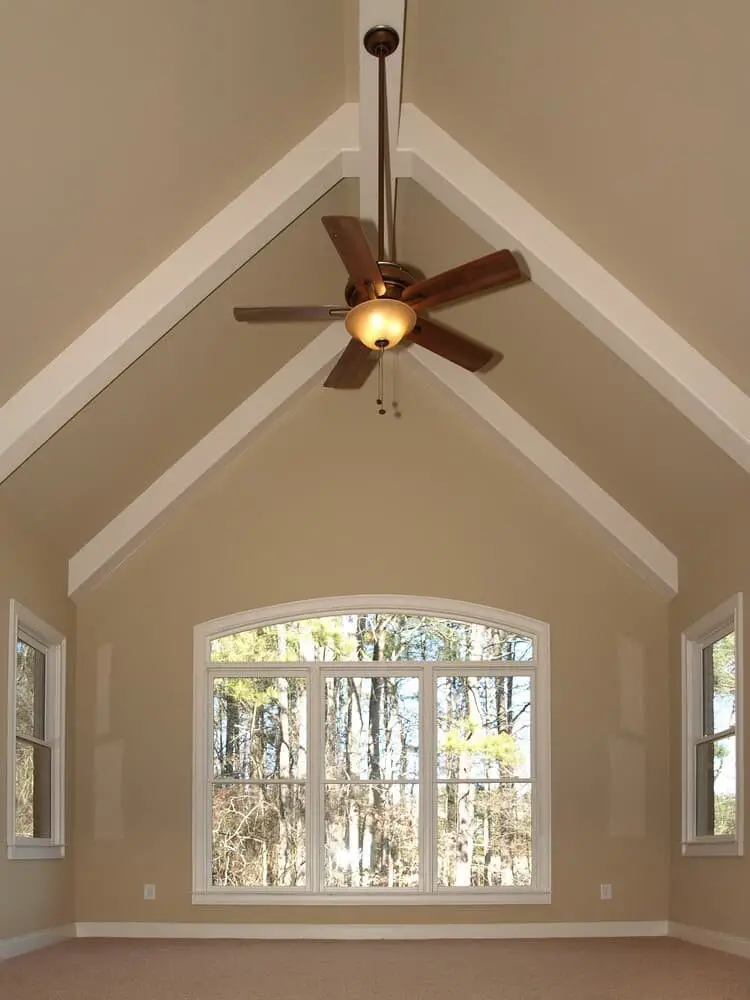
The vaulted ceiling’s unique design, characterized by an arched pattern with a rounded peak, offers several advantages. Not only can it create the illusion of more space in your rooms, but it also allows for effortless movement without bumping into obstacles. The rising features of this type of ceiling contribute to an open and airy atmosphere. One notable aspect of vaulted ceilings is their custom nature, which makes them more expensive than standard options.
Typically constructed from wood or featuring metal accents, these ceilings can be applied to various rooms, including kitchens, bathrooms, and bedrooms. The benefits of vaulted ceilings include a more spacious feeling, increased brightness, and an added touch of character compared to other ceiling types. However, there are also some drawbacks to consider: the higher cost of installation, as well as the need for highly skilled professionals to ensure proper installation.
Metal Ceiling
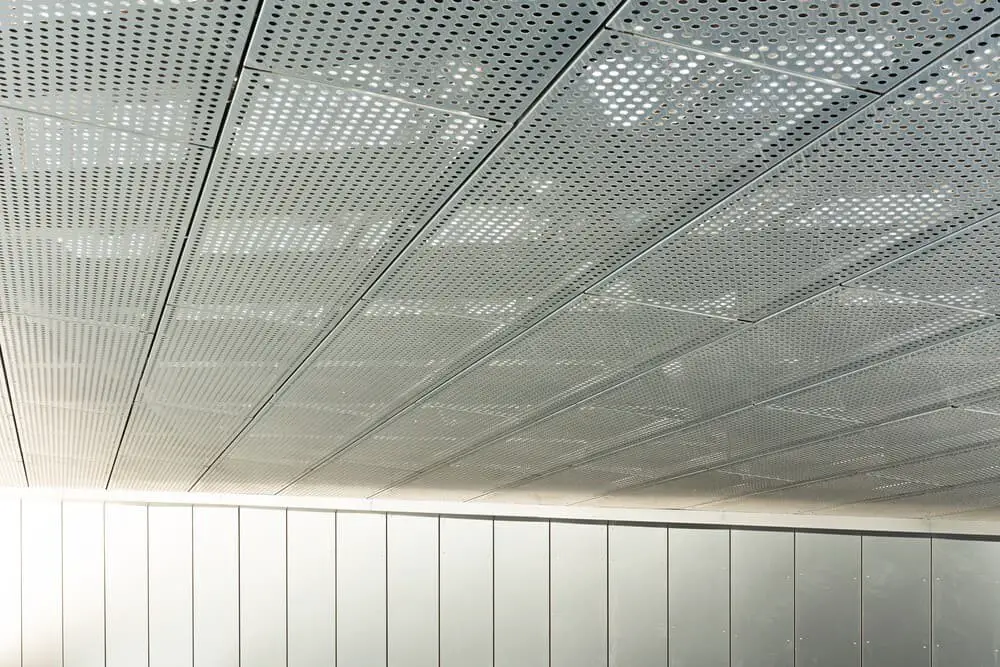
Metal ceiling tiles, crafted from metal and coated with plastic for seamless installation, can be effortlessly integrated into any room in your home. Their unique properties make them an attractive choice for homeowners seeking to enhance their space’s energy efficiency and minimize heat loss. The insulation capabilities of these tiles are impressive, allowing you to enjoy a more comfortable living environment while reducing your reliance on heating systems.
Some notable advantages of metal ceiling tiles include ease of installation, fire-resistance, and durability – they won’t crack or warp over time, nor will they rot or absorb moisture. Furthermore, they bring an added layer of strength to your home’s structural integrity. However, one significant drawback is the higher upfront cost compared to other materials on the market.
PVC Ceiling
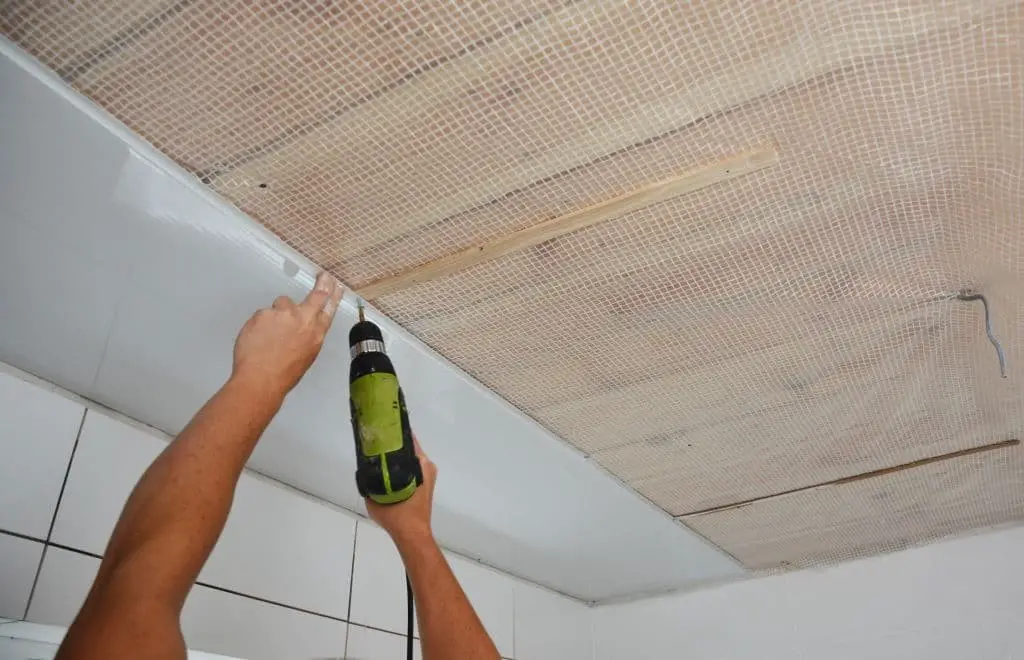
PVC ceiling tiles offer an affordable solution for homeowners, boasting a wood-like texture and a range of color options that can enhance any room. Their pre-attached design makes installation a breeze, even for those without prior experience. The benefits of PVC ceiling tiles are numerous. They’re incredibly easy to maintain, as they require minimal upkeep and are resistant to damage.
Additionally, they’re the most affordable option on the market, making them an attractive choice for those on a budget. You can also customize their appearance to give your space a more luxurious feel. Furthermore, PVC ceiling tiles are durable, simple to clean, and less susceptible to insect infestations compared to other materials. However, it’s essential to note that they do have some drawbacks.
While PVC ceiling tiles may not offer the same aesthetic appeal as other types of ceilings, their ease of installation and maintenance make them a practical choice. It’s also important to be aware that exposure to heat can cause damage, and prolonged usage may release toxic chlorine gas. Visible joints between panels are another consideration, but overall, PVC ceiling tiles remain a popular option for those seeking an affordable and functional ceiling solution.
Styrofoam Ceiling
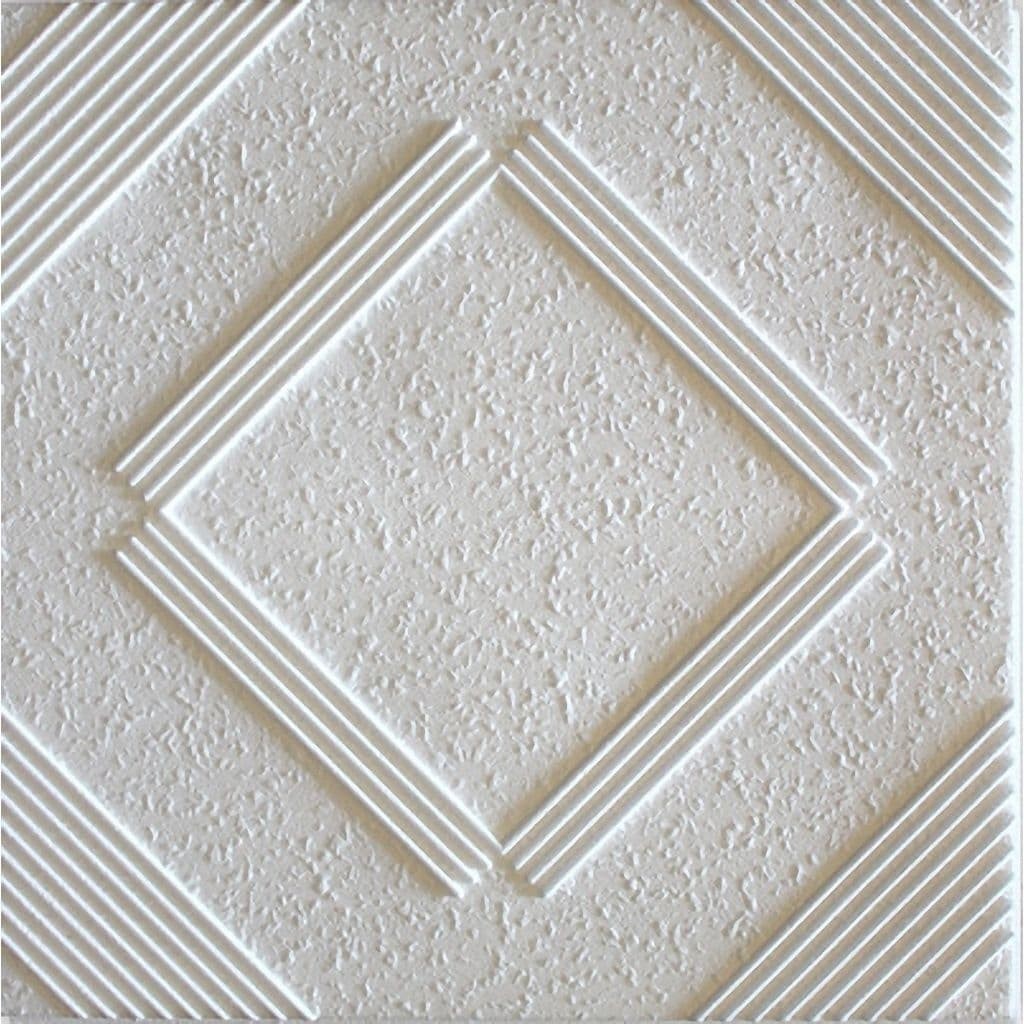
Styrofoam, a staple in many homes, boasts a unique composition of polystyrene, granting it natural fireproof qualities and ease of maintenance. Its paintable and stainable surfaces allow homeowners to customize their ceilings to suit their design preferences. The material also offers a range of colors, allowing for seamless integration into any interior aesthetic.
The benefits of Styrofoam ceiling tiles include effective insulation, widespread availability and ease of installation, varying options to cater to diverse tastes, and the potential to lower energy bills through efficient heat retention.
However, it’s essential to consider some drawbacks. While not inherently difficult to maintain, Styrofoam can be challenging to clean due to its tendency to absorb stains more readily than other ceiling materials.
Faux Tin Ceiling
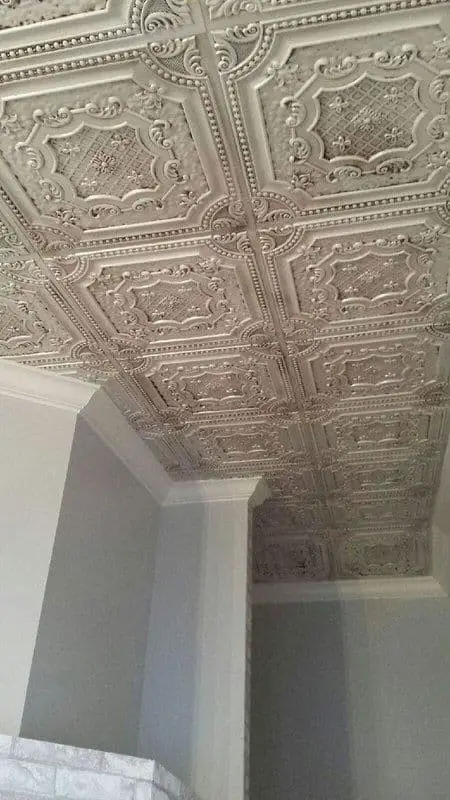
Faux tin ceilings, made from a combination of metal and plastic sheets, can add an air of nostalgia to your home. Their reflective and shiny finish gives off a vintage vibe that’s hard to resist. However, it’s essential to consider their limitations. While they’re resistant to fire, they don’t provide much insulation, making them less energy-efficient than traditional ceilings.
On the plus side, faux tin ceilings are quite attractive and can be a cost-effective solution for homeowners looking to give their space an old-fashioned charm.
But, there are some downsides to consider. They require high maintenance to keep them looking their best, and some may not find them entirely realistic.
Vinyl Ceiling
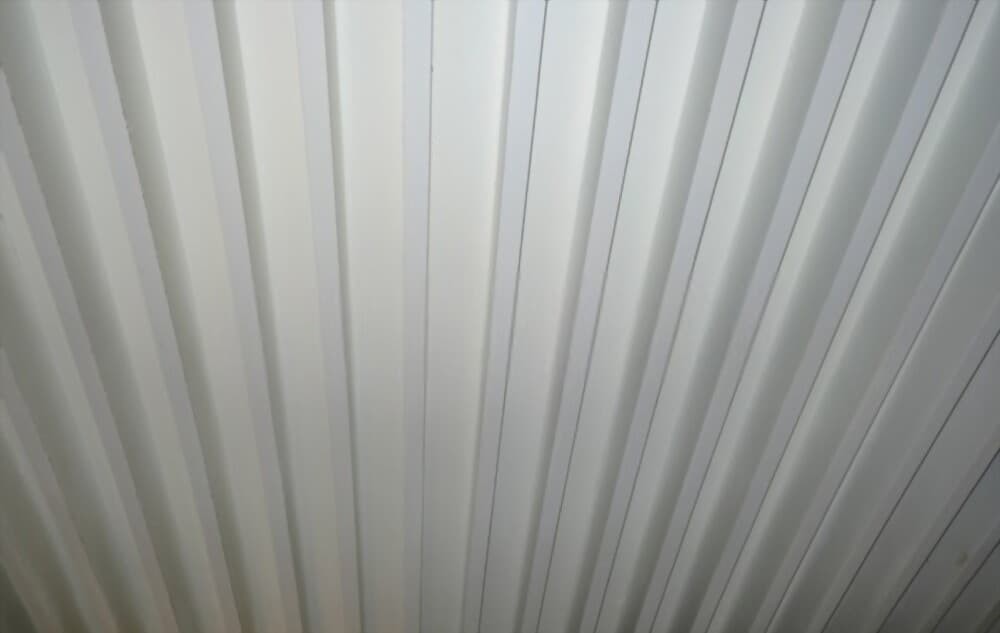
These lightweight plastic sheets, available in various sizes and designs, offer a unique way to transform any room’s aesthetic. Installation is straightforward, as they simply require sticking to walls or ceilings. Another advantage is their paintability, allowing for seamless integration with your chosen decor.
The benefits don’t stop there. They’re resistant to humidity, making them suitable for areas prone to moisture.
Their versatility also makes them a great option for various applications, and their durability ensures they’ll withstand the test of time.
While they offer many advantages, it’s essential to consider some potential drawbacks. In extreme temperatures, these sheets can warp or become misshapen. Additionally, when burnt, they may release harmful chemicals into the air, making proper disposal crucial.
Glue up Ceiling
Glue Up ceilings, comprised of metal sheets, possess a sturdy quality that lends them a certain heft. Standard dimensions and various design options enable users to imbue any room with a unique aesthetic. Perhaps most notably, however, this type of ceiling is particularly adept at concealing cracks, allowing for a seamless appearance. Furthermore, the tiles can be easily painted to harmonize with the surrounding decor.
While there are some drawbacks to consider, the advantages of Glue Up ceilings far outweigh the disadvantages. For instance, their installation process is relatively straightforward, and they boast impressive durability, soundproofing, and noise reduction capabilities. Additionally, the tiles can be trimmed to fit snugly against walls, ensuring a polished finish.
Of course, it’s not all sunshine and rainbows. One notable drawback is the significant upfront cost of Glue Up ceilings.
Furthermore, their removal process can be arduous if you decide to change your decor in the future.
Plywood Ceiling
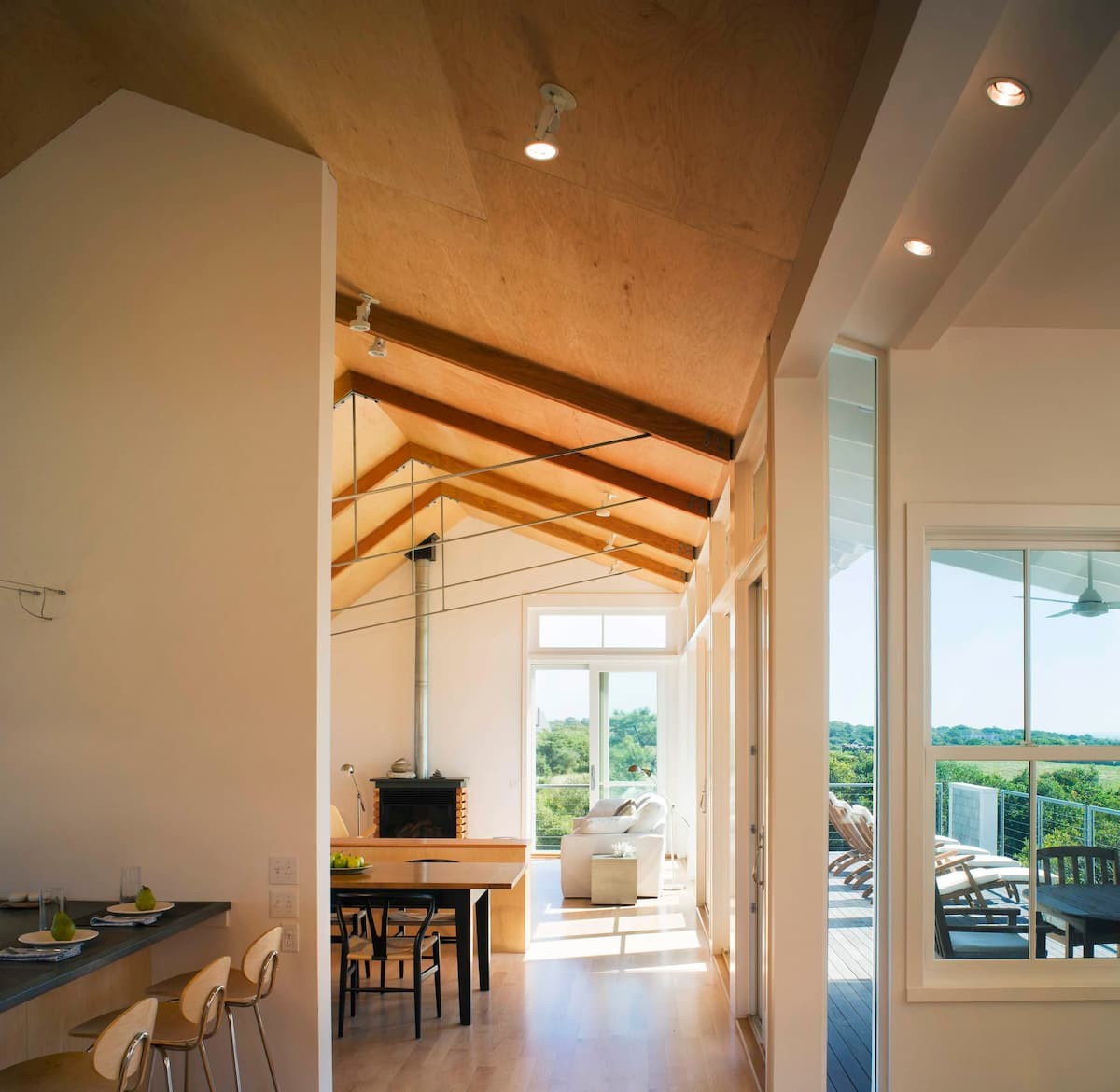
When it comes to ceilings, plumbers often opt for plywood due to its ease of installation and removability. With a thickness that’s just right for supporting any room, this type of ceiling offers a standard look that can be easily achieved. Plus, the wood texture adds a rustic feel to any space, giving it a unique charm. The benefits of choosing a plywood ceiling are numerous. For one, it’s more budget-friendly than other options.
Additionally, plywood is incredibly strong and durable, making it a great choice for high-traffic areas or rooms that require extra support. It also adds aesthetic value to a room, allowing you to customize the look to fit your design and style preferences. And, due to its lightweight nature, installation is often a breeze. Of course, there are some drawbacks to consider. For one, plywood ceilings may require an extra layer of laminate or veneer for added durability and protection.
Additionally, cutting plywood can be a bit more challenging than working with other materials.
Drywall Ceiling
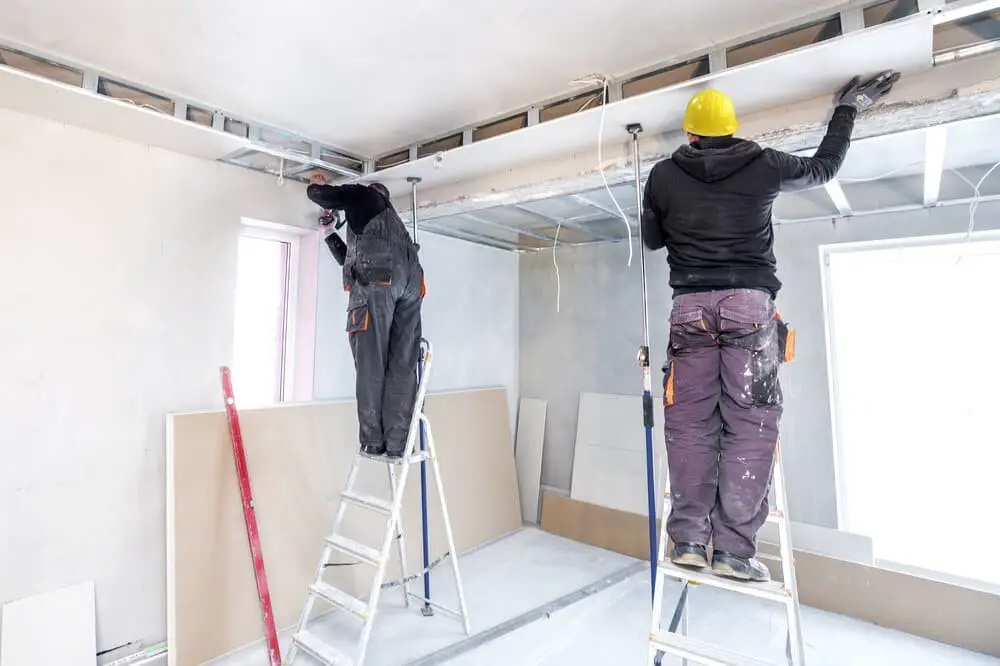
Drywall ceilings are constructed by layering various materials together to form large sheets. These sheets are then applied to the entire ceiling surface, which is subsequently dried and molded into place. This economical option offers a more refined appearance compared to wood joists or open beams, but may exhibit an exposed truss system that can detract from the overall visual appeal.
The benefits of drywall ceilings include their versatility, availability in multiple finishes and designs, fire-resistance, and insulating properties. However, they also present some drawbacks, such as susceptibility to damage, requirement for professional installation, and potentially high costs that may not be feasible for all homeowners.
For those seeking alternative solutions, consider exploring 24 Types of Drywall Alternatives For Your Wall, Basement, Ceiling, or Shed.
Plaster Ceiling
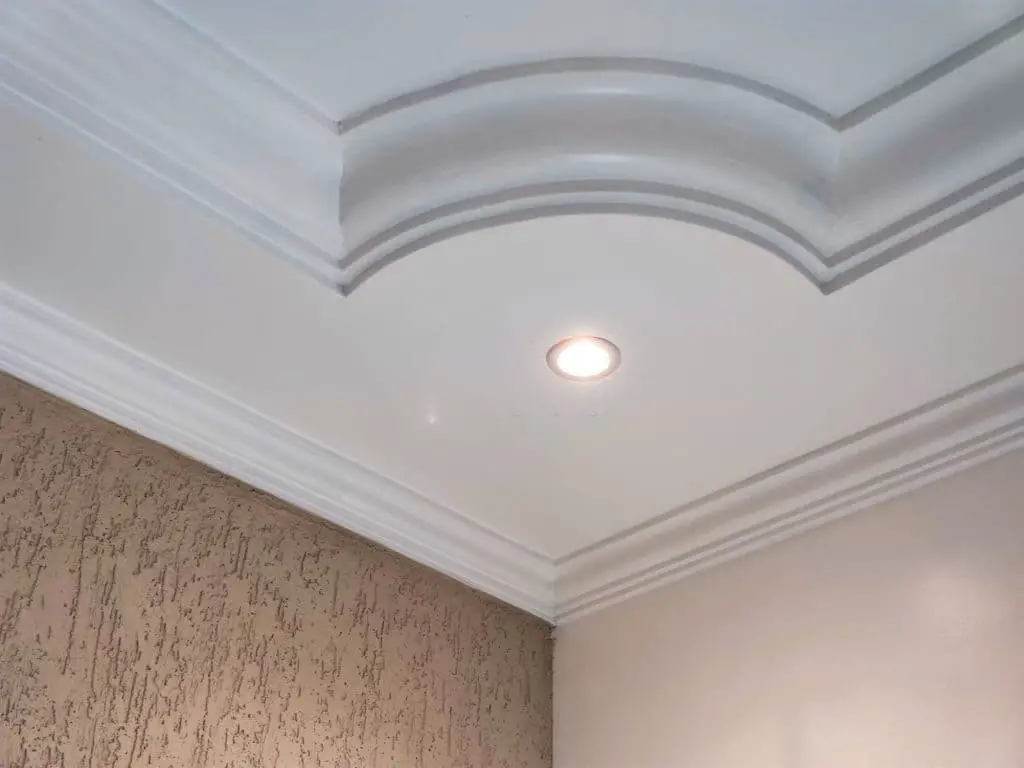
While plaster remains the most popular choice for ceiling installations, its limitations become apparent in larger spaces like grand living rooms with vaulted ceilings. On one hand, plaster offers a range of benefits that make it an attractive option, including high customizability, affordability, and impressive durability. Additionally, its insulating properties make it suitable for both cold and warm climates. Furthermore, plaster is surprisingly lightweight yet resilient.
On the other hand, plaster also presents some drawbacks. Its installation and repair can be laborious and require significant expertise. Moreover, plaster’s susceptibility to water damage means that it may not be the best choice for areas prone to moisture or high humidity.
Beadboard Ceiling
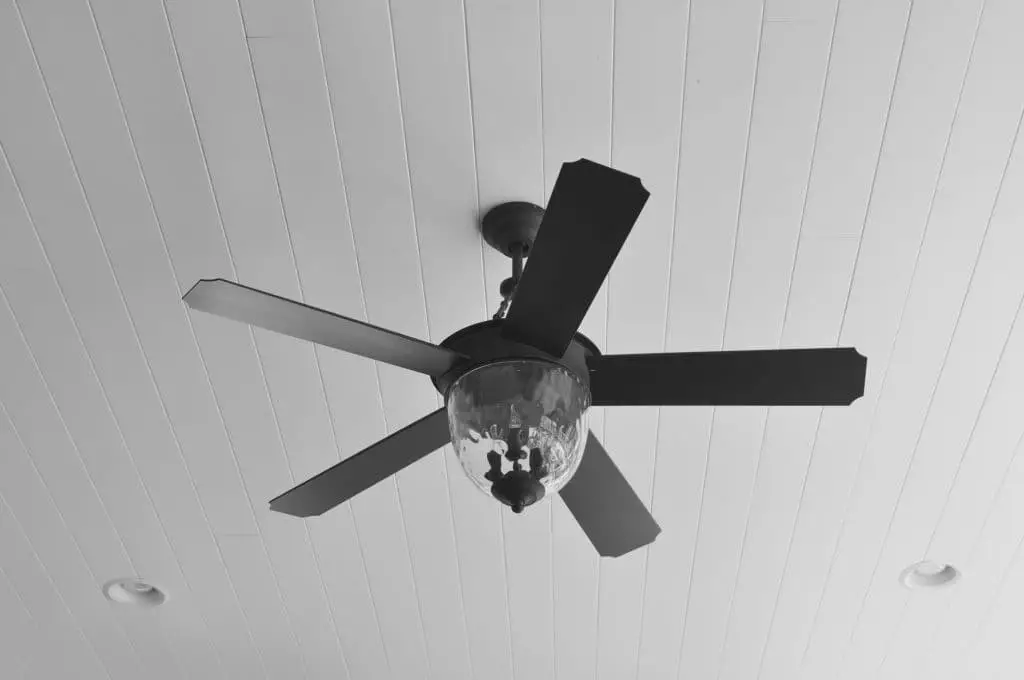
While beadboard ceilings are often overlooked, they can be a great way to add an eclectic touch to a room’s style. One of the main advantages of beadboard is its ease of installation and cost-effectiveness compared to other types of ceiling treatments. Additionally, it provides excellent insulation for your home, making it a practical choice for many homeowners.
On the plus side, beadboard ceilings can be used to update an outdated popcorn ceiling and give a room a fresh new look.
They’re also easy to install, which makes them a great DIY project for those looking to add some personality to their space.
However, there are a few potential downsides to consider. For example, beadboard ceilings can be difficult to remove if you decide to renovate your home in the future. Additionally, they may not be the best choice for homeowners who prefer a more subtle look, as the beads can be quite prominent.
Overall, though, beadboard ceilings can be a great way to add some visual interest and character to a room.
Conclusion
When it comes to selecting a new ceiling system for your home, one of the first considerations is the vast array of options available. From a functional standpoint, the type of ceiling you choose will depend on factors such as your budget, the size and shape of the space, and what you hope to achieve with the installation.
With varying sizes, shapes, and price points among different types of ceilings, it’s essential to research thoroughly before making a decision that meets both your needs and those of your space.
Related Posts
Elevate your space’s aesthetic by transforming a rattan dresser into a design statement. Start by experimenting with pattern play, combining bold hues and textures to create a unique visual language. Consider pairing the natural charm of rattan with vintage-inspired accents or modern metallic tones for a striking contrast. Alternatively, let retro rugs take center stage in your home décor.
Inject a dash of nostalgia by incorporating vintage-inspired patterns, or opt for bold geometric shapes to add a touch of sophistication. Whichever approach you choose, remember that creativity is key to making your space truly unforgettable.



